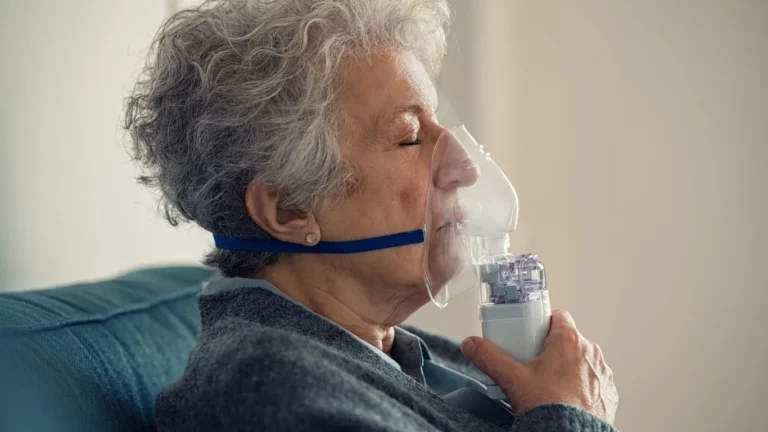How to Prevent Asthma in Babies – A Comprehensive Guide
Worried about your baby’s health and wondering how to prevent asthma in babies? You’re not alone! We’ve got everything you need to know about reducing asthma risk and keeping your little one breathing easy.
When it comes to your baby’s health, there’s nothing more important than ensuring they grow up strong and healthy. Asthma in babies can be a scary concern, but the good news is there are steps you can take to help prevent it or manage it better if it does develop. In this guide, we’re going to walk you through the ways you can prevent asthma in babies, the common triggers, and how to keep your baby comfortable and safe.
What Is Asthma in Babies?
Asthma is a chronic condition that affects the airways, causing them to become inflamed and narrowed, making it difficult for your baby to breathe. In babies, it’s often hard to diagnose right away since infants can’t tell you what they’re feeling, and many symptoms are similar to those of other common childhood illnesses. Wheezing, coughing, difficulty breathing, and rapid breathing are signs that could point to asthma, but these can also be symptoms of other issues like a cold. 
How to Prevent Asthma in Babies?
While you can’t completely control whether your baby will develop asthma, there are several things you can do to minimize the risks and keep them breathing easy. Let’s break it down:
1. Breastfeeding Your Baby
Breastfeeding has been shown to have protective effects against asthma and respiratory issues. The breast milk provides your baby with antibodies that help strengthen their immune system, reducing the risk of respiratory infections that can trigger asthma. If possible, try to exclusively breastfeed your baby for the first six months.
Real-life example: Sarah, a mom of two, noticed that her first baby had more respiratory issues as a newborn. After breastfeeding her second child exclusively for the first six months, she found that he seemed to have fewer issues with wheezing and coughing.

2. Minimize Exposure to Allergens
Allergens are one of the most common asthma triggers. Common household allergens like dust mites, pet dander, and pollen can irritate your baby’s airways. Keeping your home as allergen-free as possible is a great preventive measure. Here are a few tips:
- Use hypoallergenic bedding to reduce dust mites.
- Clean carpets and floors regularly to minimize pet dander and dust buildup.
- Consider using air purifiers in your baby’s room to filter out allergens.
- Avoid smoking in or near your home, as cigarette smoke can be a significant asthma trigger.
3. Avoid Exposure to Smoke and Pollution
Exposure to tobacco smoke is one of the biggest risk factors for asthma development in children, especially in their first year. It can damage the lungs and increase the likelihood of developing asthma or respiratory issues. Air pollution is another major factor, so if you live in an area with high pollution, make efforts to keep your baby indoors during high-smog days.
Real-life example: Emma, a mom who lived in a busy city, made sure to always take her newborn for walks in the park away from traffic. She found that this helped keep her baby’s airways clear and free from pollutants.
4. Monitor and Manage Respiratory Infections
Respiratory infections in infants can sometimes trigger or worsen asthma symptoms. During cold and flu season, it’s especially important to take extra precautions to keep your baby healthy. Regular handwashing, limiting contact with sick individuals, and keeping your baby’s immune system strong through good nutrition and plenty of rest can help reduce the risk of infections. 
5. Introduce Solid Foods Carefully
Introducing solid foods to your baby can sometimes lead to food allergies, which are often linked to asthma. Foods like eggs, peanuts, and dairy can trigger allergic reactions that may increase asthma risk. If you have a family history of asthma or allergies, talk to your pediatrician before introducing certain foods. They may recommend introducing these foods one at a time to monitor for any reactions.
6. Maintain a Healthy Weight
Babies and toddlers who are overweight or obese may have a higher risk of developing asthma. Maintaining a healthy weight through a balanced diet and appropriate physical activity as your child grows can help reduce their asthma risk in the future.
7. Create a Safe and Clean Living Environment
Babies spend a lot of time on the floor, so it’s essential to keep your living space clean. Regularly vacuuming and dusting, washing your baby’s bedding, and cleaning toys can help eliminate any potential irritants. If your baby has a history of eczema or other allergies, be extra cautious about allergens in the environment.
Common Asthma Triggers to Watch Out For
Even with preventive measures in place, there are certain things that can still trigger asthma attacks in babies. Knowing these triggers is key to minimizing flare-ups.
- Cold air: Cold weather or sudden temperature changes can cause your baby’s airways to constrict.
- Strong odors or chemicals: Strong perfumes, cleaning products, or even fresh paint can irritate your baby’s lungs.
- Exercise or physical activity: Some babies with asthma may have difficulty breathing during physical exertion.
- Weather changes: Damp, cold weather or sudden shifts in the weather can trigger asthma symptoms in sensitive babies.

When to Seek Medical Help
If you notice your baby is frequently coughing, wheezing, or having trouble breathing, it’s important to talk to your pediatrician. Early diagnosis and treatment are essential for managing asthma in babies and preventing it from getting worse. Your doctor may refer you to a pediatric pulmonologist or allergist for further testing if they suspect asthma.
Conclusion
While you can’t always prevent asthma in babies, there’s a lot you can do to reduce the risk. From breastfeeding to avoiding environmental triggers, these steps will go a long way in keeping your baby’s lungs healthy. If you ever suspect that your baby is struggling with asthma, don’t hesitate to reach out to a doctor for guidance. Early intervention is key to making sure your little one can breathe easy as they grow!
Appendices
FAQs
- Can asthma be prevented in babies entirely? While some asthma risk factors are genetic and can’t be changed, you can reduce your baby’s risk by minimizing exposure to allergens and pollutants, breastfeeding, and keeping their environment clean.
- How do I know if my baby has asthma? Common signs of asthma in babies include frequent coughing, wheezing, trouble breathing, and rapid breathing. If you notice these symptoms, it’s important to consult with your pediatrician for an evaluation.
- What are the best ways to reduce allergens in the home? Regular cleaning, using allergen-proof bedding, and installing air purifiers can help reduce dust mites, pet dander, and other common allergens that can trigger asthma.
- Can asthma develop in babies who aren’t exposed to secondhand smoke? Yes, asthma can develop due to genetic factors, family history, and environmental triggers like allergens or pollution. Reducing exposure to known triggers helps, but it’s not always enough to prevent asthma.
- Is there a link between asthma and food allergies in babies? Yes, food allergies can increase the risk of asthma. If your baby has a family history of allergies or asthma, introducing certain foods should be done cautiously.
References
- American Lung Association. (2024). “Asthma in Children.”
- National Institutes of Health. (2023). “Preventing Asthma in Babies.”
- World Health Organization. (2022). “Asthma: Prevention and Control.”
Disclaimer
The information provided in this article is for educational purposes only and does not substitute for professional medical advice. Always consult with your pediatrician or a healthcare provider for any concerns related to your baby’s health. Individual needs may vary, and professional guidance is crucial for personalized care.

Bianca Nala is a compassionate Nurse Practitioner with a strong background in primary and respiratory care. As a health writer for Healthusias.com, she combines her clinical expertise with a talent for clear, relatable storytelling to help readers better understand their health. Bianca focuses on topics like asthma, COPD, chronic cough, and overall lung health, aiming to simplify complex medical topics without losing accuracy. Whether she’s treating patients or writing articles, Bianca is driven by a single goal: making quality healthcare knowledge accessible to everyone.





